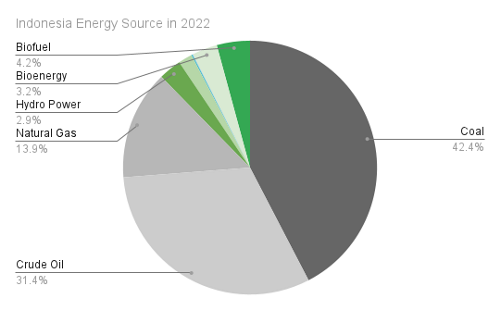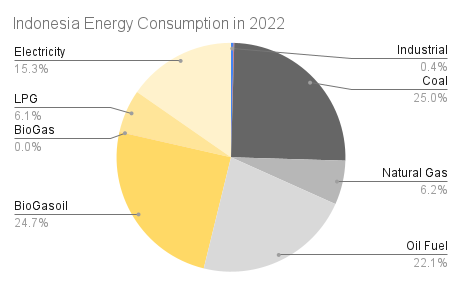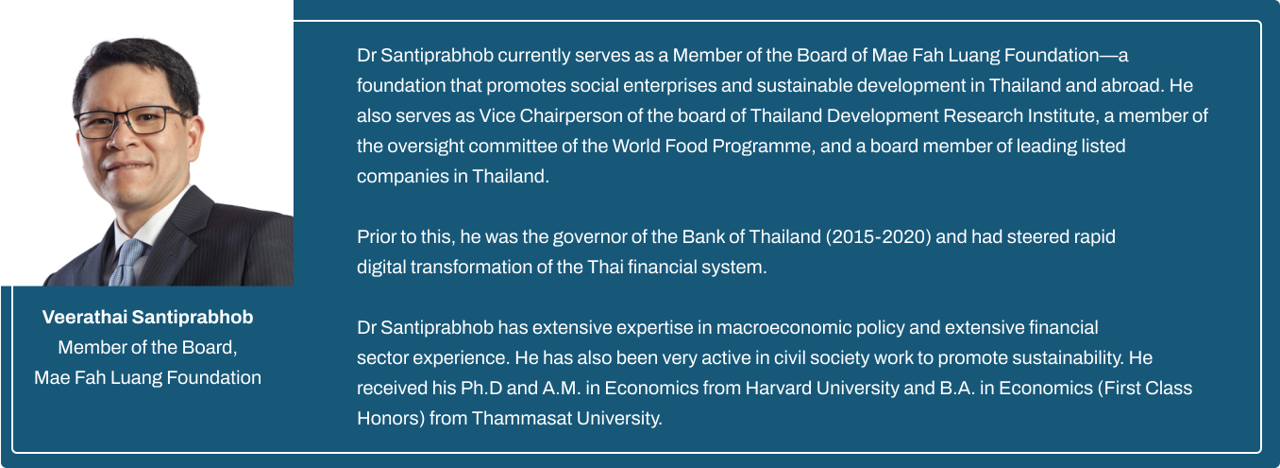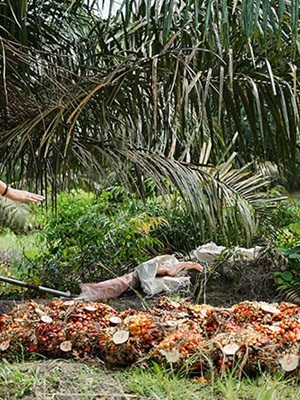The global demand for energy continues to grow at an accelerating pace. In 2023, the world’s energy needs reached unprecedented levels, with global energy consumption increasing by 2.2%, a significant rise compared to the average annual growth rate of 1.5% recorded between 2010 and 2019
Coal, a primary source of energy, is finite and its environmental consequences, particularly its contribution to greenhouse gas emissions, are increasingly detrimental. Coal-based energy production is a major contributor to climate change, as it emits large quantities of carbon dioxide and other harmful gases into the atmosphere. Given the limitations of coal and the pressing need to mitigate its environmental impact, renewable energy emerges as a promising solution. By harnessing renewable resources such as solar, wind, and hydropower, the world can reduce reliance on coal and other fossil fuels, thereby decreasing greenhouse gas emissions. Transitioning to renewable energy sources is critical to achieving a more sustainable and environmentally responsible global energy system.
Several countries have embraced the transition to renewable energy as a key strategy for reducing carbon dioxide emissions. Among the global leaders in renewable electricity generation are China, the United States, and Brazil, which rank as the top three nations in this effort. According to 2022 data, China generated 2,673,550 GWh, the U.S. produced 981,697 GWh, and Brazil contributed 594,028 GWh of electricity from renewable sources, including bioenergy, geothermal energy, hydropower, marine energy, pumped storage, solar energy, and wind power
Indonesia, in particular, is highly vulnerable to the effects of climate change, facing risks such as flooding, landslides, and rising sea levels that threaten its population and economy. The country’s vulnerability, influenced by a combination of political, geographic, and social factors, is reflected in its ranking of 97th out of 181 countries in the 2020 ND-GAIN Country Index
At the COP-26, Indonesia disclosed an ambitious strategy aimed at accelerating its transition to renewable energy sources such as solar, wind, and geothermal power. The country has committed to generating more than 51% of its new electricity capacity from renewables by 2030, reflecting its dedication to reducing reliance on fossil fuels and cutting greenhouse gas emissions. This commitment was reaffirmed during the International Sustainability Forum in Indonesia, held in September 2024, where the Ministry of Energy and Mineral Resources repeated that “Indonesia remains on track to stop the construction of new coal-fired power plants by 2030”.
Indonesia's annual energy demand in 2022 reached 1,113,656,743 barrels of oil equivalent (BOE), excluding traditional biomass. The data reveals that the vast majority of Indonesia’s energy consumption—87%—was derived from non-renewable sources such as coal, crude oil, and natural gas. In contrast, renewable energy sources, including hydropower, bioenergy, and biofuels, contributed only 13% to the country's total energy consumption. This heavy reliance on non-renewable energy underscores the critical need for Indonesia to accelerate its transition toward cleaner, more sustainable energy solutions in the coming years.

Indonesia Energy Source in 2022

Indonesia Energy Consumption in 2022
At the International Sustainability Forum held in Jakarta, the President of Indonesia highlighted the nation’s huge potential for renewable energy, stating, "Indonesia has a huge green energy potential reaching more than 3,600 gigawatts." This statement underscores Indonesia’s significant natural resources and the opportunity to become a major producer of renewable energy. However, despite this vast potential, the country's progress in renewable energy production remains limited, especially when compared to its heavy reliance on non-renewable sources.
In 2022, non-renewable energy sources like coal, crude oil, and natural gas accounted for 87% of Indonesia's total energy consumption, while renewable sources such as hydropower, bioenergy, and biofuels contributed only 13%. This disparity highlights the gap between Indonesia’s renewable energy capacity and its current energy mix, indicating that much more needs to be done to shift toward sustainable energy.
One of the major hurdles to scaling up renewable energy in Indonesia is the lack of investment. The country continues to face challenges in attracting sufficient capital to develop and deploy renewable energy infrastructure. Recognizing this, the Indonesian government is actively inviting global investors to participate in the development of its green energy resources. The President made a direct appeal to potential investors, urging them to collaborate with Indonesia in harnessing its vast renewable energy potential, which could be pivotal in the country’s efforts to meet both its growing energy demand and its climate commitments.
Indonesia's energy future centers on its ability to grab the current momentum and prioritize renewable energy investments. If Indonesia can fully harness its renewable energy potential—estimated at over 3,600 gigawatts—by attracting investment, scaling up infrastructure, and fostering international partnerships, the country stands to reduce its heavy reliance on coal, crude oil, and natural gas and allow Indonesia to meet its net-zero emissions target by 2060 or earlier, positioning the country as a global leader in climate action. On the other hand, if Indonesia fails to capitalize on its renewable energy potential and continues to rely heavily on coal and other non-renewable sources, several negative outcomes could unfold. The best-case scenario offers the potential for economic growth, energy security, and climate leadership, while the worst-case scenario poses risks of energy shortages, environmental degradation, and missed climate targets.
References
Bank, W. (2021). Climate risk Country Profile.
Enerdata. (2024). World Energy & Climate Statistics - Yearbook 2024.
Indonesia, M. o. (2023). Handbook of Energy & Economic Statistics of Indonesia .
Irena. (2024). Country Rankings.
Posted 17/10/2024

















